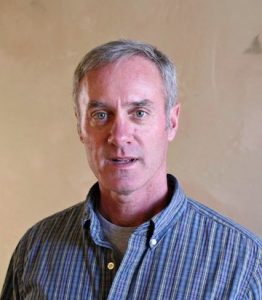Labor Day traffic may be sign of what’s to come down the road
Motorists unfortunate enough to be traveling through Summit County on U.S. 40 and westbound Interstate 80 on Monday afternoon found themselves mired in a slow-moving traffic jam along with thousands of homeward bound Labor Day travelers. By late afternoon, cars, campers and tanker trucks trying to get onto westbound I-80 were backed up on U.S. 40 all the way to Quinn’s Junction.
According to the Utah Department of Transportation, there were no major accidents or construction projects to blame – just a lot of cars on the road all at once.
Prior to the holiday, UDOT warned of potential congestion on the most popular summer vacation routes: Interstate 15 and US 6. But the backup in Summit County was not predicted. In hindsight, though, the good weather and low gas prices should have indicated that we were in for record-breaking crowds.
Summit County wasn’t the only spot that saw an unusually high volume of traffic over Labor Day weekend. Zion National Park was inundated. So instead of covering the majesty of one of the state’s Mighty Five, the news media ended up reporting on the lack of parking and long lines at the park’s entrance.
Last weekend’s holiday horror stories come amidst a call to arms in Summit County to solve our own growing traffic problems.
You could say that Springdale, Utah, the little town that sits at the entrance to Zion National Park, offers cautionary tale for Park City. Like our town, the heart of Springdale sits in a narrow canyon that has limited egress and ingress. And like Park City, Springdale has seen a lot of growth in recent years. In an effort to capitalize on the park’s popularity, several new hotels and residential developments have been shoehorned into the scenic canyon, inviting more tourists and more traffic every year.
A few years ago, in response to traffic and air-quality concerns, Springdale and the National Park Service introduced a shuttle system to reduce the number of private vehicles in the most heavily trafficked section of the park. The buses were an unmitigated success. But last weekend, even they were overwhelmed. Visitors reportedly waited more than an hour to enter the park and then waited again to board the buses to the trailheads.
Zion National Park has seen a 30 percent increase in visitors over the last two years. Park City isn’t growing that fast but it is beginning to bulge at the seams. According to U.S. Census Bureau statistics, over the last five years Park City’s population grew by 7.5 percent and Summit County’s increased by 9.1 percent. Statewide population projections are even more alarming. According to a UDOT spokesperson, his department is anticipating the state’s population to double within 35 years.
That means those Labor Day traffic jams are going to be a lot more commonplace — unless we work together to come up with some innovative solutions.
Park City and Summit County have started that process and they are looking for help from local residents. This month and next, officials will host a series of public information meetings about a set of transportation initiatives including two .25 percent tax increases to implement them. Watch your mail boxes for information about the effort or log on to: http://www.letsgosummit .com to learn more.
More Dogs on Main: We got our town back
We went from S.R. 248 backed up all the way to Quinn’s every morning, and often backed up on to U.S. 40 in both directions, to nothing. Overnight.
Sundance Film Festival signals it may leave Park City after contract through 2026 ends
In 2027, the Sundance Institute’s contract to host the festival in town goes up for renewal, so the nonprofit is announcing a formal Request for Information to explore possible viable locations in Utah and the United States that may host the 10-day event beginning that year.

Support Local Journalism

Support Local Journalism
Readers around Park City and Summit County make the Park Record's work possible. Your financial contribution supports our efforts to deliver quality, locally relevant journalism.
Now more than ever, your support is critical to help us keep our community informed about the evolving coronavirus pandemic and the impact it is having locally. Every contribution, however large or small, will make a difference.
Each donation will be used exclusively for the development and creation of increased news coverage.





